The Arts Interview: Cecile Johnson Soliz
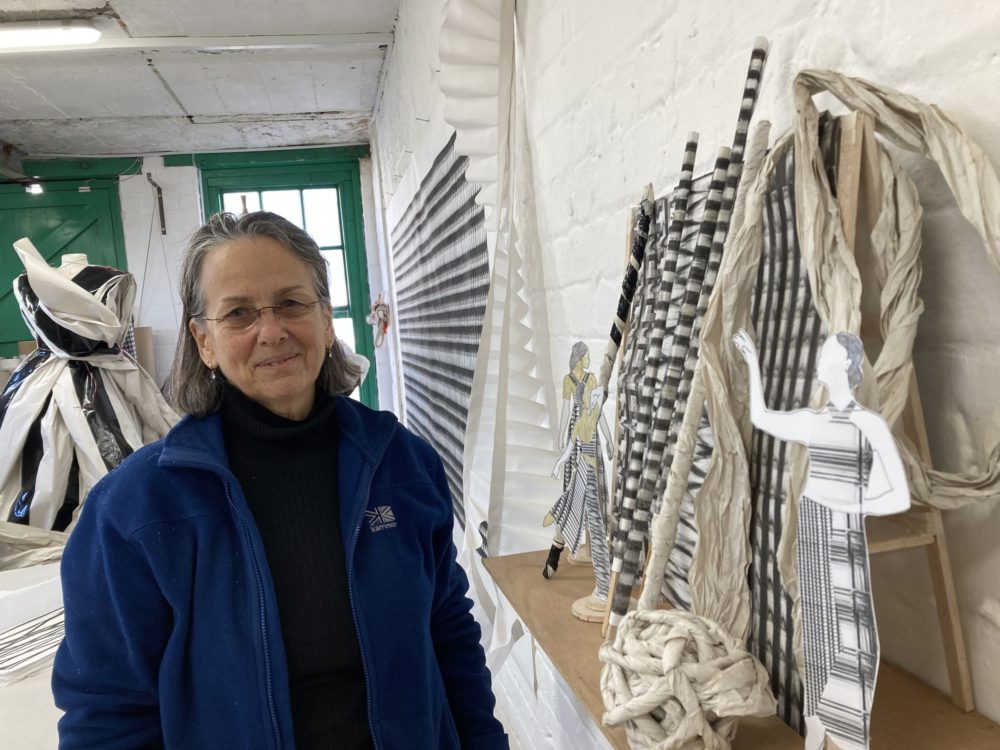
Jon Gower
Being a visual artist can be a solitary occupation: hours spent alone in a studio making, imagining and making tea. So when the opportunity arises to collaborate it can be quite the liberation. That was certainly the case when sculptor Cecile Johnson Soliz starting working with dancers.
Cecile first started working with choreographer and dancer Faye Tan from Singapore during Laboratori, a two-week residency organized by the National Dance Company Wales at Chapter Arts Centre in 2022: ‘Faye and I began talking about what sculpture and drawing can offer dance and what dance can offer sculpture and drawing. We were then commissioned to work together to create Infinity Duet, a short 12-minute piece with two dancers and sculpture.’
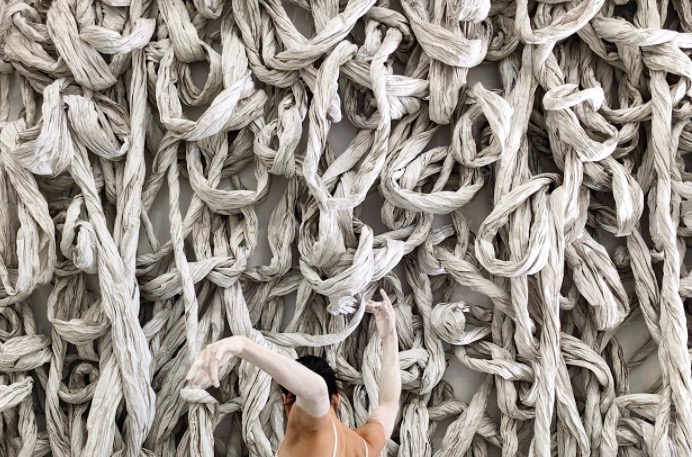
Which means Cecile’s studio in Cardiff’s Riverside has become a veritable hive of activity as she generates sculptures, drawings and two sets of costumes: ‘It’s been really thrilling to collaborate with Faye and all the dancers to ask questions around what sculpture and drawing can add to dance and vice versa. Can sculpture coexist alongside dance and retain its sense of itself, its autonomy? Because often if you put something on a stage or a shared dance space, people will call it a set, you know. So how do you put a sculpture with a dancer and each retain their own sense of identity, but also what can sculpture add to dance and what can dance add to sculpture?’
In Tandem
Such questions will be posed in a collaborative event called In Tandem which will feature Infinity Duet together with some of Cecile’s drawings and mannequins, all set within an aural world conjured into being by Cardiff sound artist Richard McReynolds. Cecile explains: ‘I made some paper costumes for the Cardiff Dance Festival, and we were really surprised that when all the dancers were doing certain animated movements, it sounded like the sea. It was so crashing. So Richard came to the studio where I had a ton of paper, set up his recording system and squashed paper, ripped it, pulled it and made a collection of sounds out of which he’s now made a soundscape.’
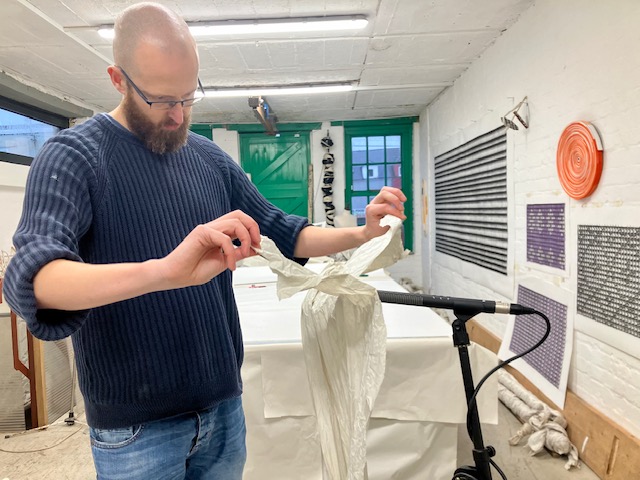
Infinity Duet will be danced three times by three different pairs of dancers. ‘So the audience will be in the space and will be invited to mingle and move around. The costumes for Infinity Duet relate to the drawings. And then I’ve also designed these big ball gown-type dresses, which the dancers will wear.’
The costumes for the dancers are outsized affairs, like the huge suit David Byrne wears in Jonathan Demme’s movie Stop Making Sense: ‘They’re bigger than life because they don’t have to fit. Are they a bit of a sculpture, are they a bit of a painting, are they a bit of a costume? I like that that we’re not always sure what we’re looking at.’
You might expect such gowns to be made from materials such as silk or taffeta surprisingly they’re made from newsprint: ‘Usually in newspapers we read it, but this newsprint comes from the big ends of rolls that I get from the printers. The rolls don’t have words but it’s still a material that can be used to say things.’
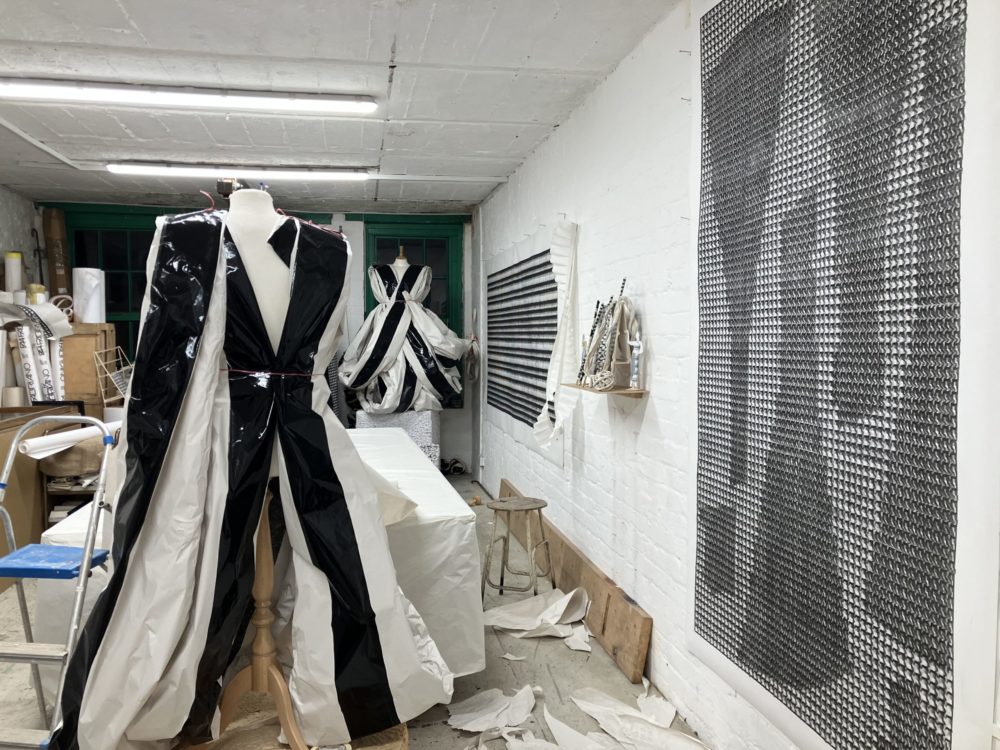
For Cecile, working with dance has both freshness and possibility and the same applies to the dancers: ‘It is different, they seem to love it, they are so excited because we’ve been given such free rein. They’ve never worn paper dresses that are oversized, because usually everything they wear has to be very carefully made, to make sure they’re not going to trip.
‘But these dresses are so big, they have to scoop them up in order to walk or they have to shuffle so we’re going to have to figure out how can they walk in them. So everything has a bit more invention about it, I think, and therefore more fun. They also don’t realize that I don’t care whether the thing rips. When the dresses get completely trashed after lots of performances, I’ll make papier-mâche out of it and then make sculpture from it.’
Drawings
Some of the drawings Cecile has made making are six metres long, like long drapes. ‘The dancers will be in front of the drawings, so their costumes will relate to them. And they’re very physical drawings. When I make them, say on this table, it’s all about the passing of the hand across the surface of the paper, building up rhythms, and I use my charcoal, I use my hand, I use a rubber, and it’s creating these patterns in time.’
In a sense the gestures used in making Cecile’s art will help direct the movement of the dancers, almost as if she’s conducting from afar, from across time: ‘That’s the thinking, and they will also be using movements relating to some of these. You begin thinking of things like gravity, weight, time so they’re trying to draw out those similarities. The drawings are all about these verticals and horizontals and about the way they criss-cross one way over the other. The dance is also very directional.’
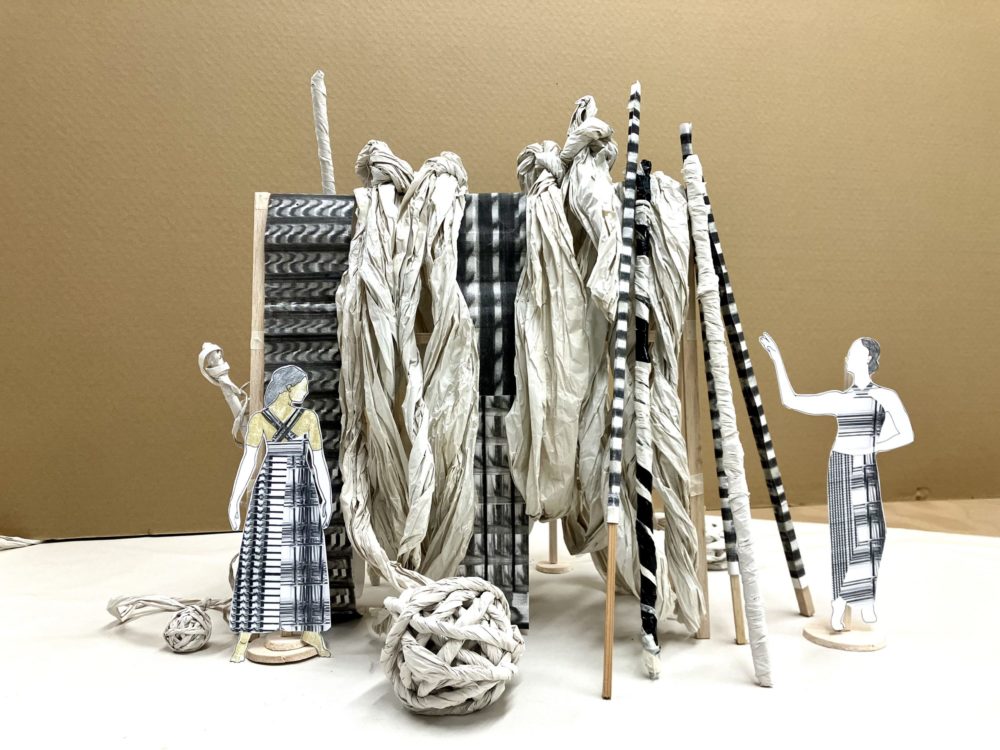
Faye Tan and Cecile Johnson Soliz, together with the dancers, have been trying to make something which is very poetic: ‘Something which has depth, and is about bringing both people and art forms together and looking at ideas such as the gesture of opening the palm of the hand as a kind of offering. Those small gestures, giving attention to such small gestures and acknowledging them, I think in this time is really important.’
Cecile Johnson Soliz is a second generation American of Bolivian heritage who grew up in California, Mexico, Bolivia, Brazil, Ghana and Italy before arriving to the U.K. to study fine art at Cardiff College of Art and Goldsmiths. Following 20 years in London, the Henry Moore Fellowship in Sculpture brought her to Cardiff in 1995 where she now lives and works.
Support our Nation today
For the price of a cup of coffee a month you can help us create an independent, not-for-profit, national news service for the people of Wales, by the people of Wales.




